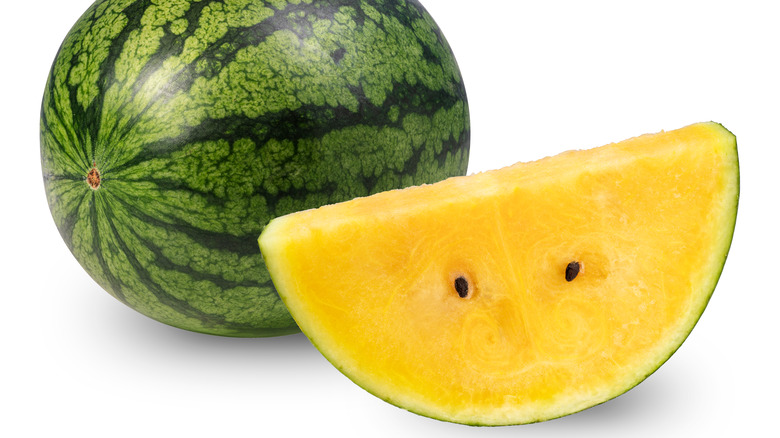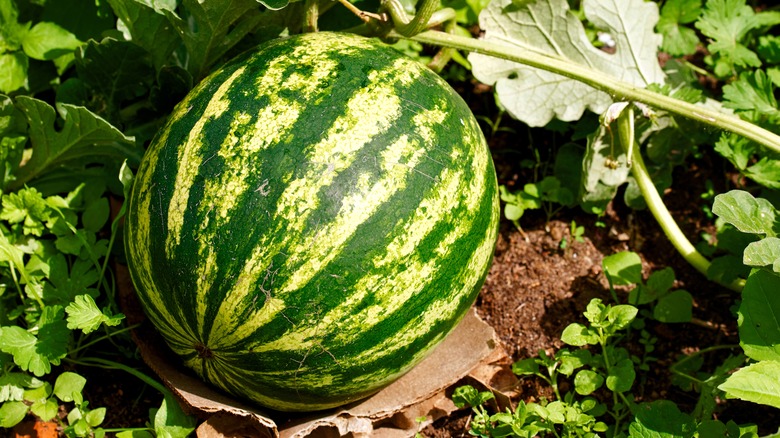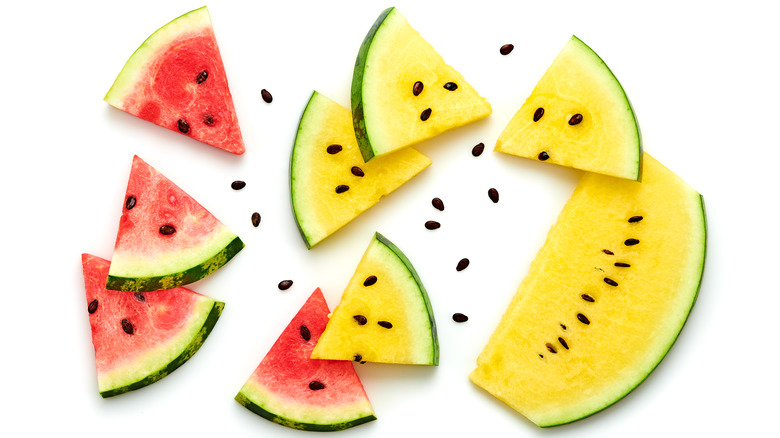Why Are Some Watermelons Yellow?
If you were asked to name as many yellow fruits as you could in five seconds, watermelon probably wouldn't be on the list. Although yellow watermelons aren't as common as red ones, they still deserve a tray at the summer snack table. Just make sure to keep the rinds attached so your guests won't confuse it with pineapple.
According to National Geographic, people have been eating watermelon for more than 5,000 years, based on the discovery of watermelon seeds in a settlement in Africa. However, the true origin of this oblong fruit is unclear. The magazine adds that writings from around 200 A.D. indicate that ripe watermelons at that time had yellowish-colored flesh. This discovery has led experts to believe that yellow watermelons actually preceded red ones.
The reason that some watermelons are yellow is that they lack a certain antioxidant that red watermelons have. In addition to the color variation, yellow watermelons differ from red ones in other ways — including taste — but they also share some similarities.
Watermelon's harvesting history
The first known wild watermelons were believed to have grown in Africa, and they didn't taste like watermelons today (via University of Missouri's Integrated Pest Management). Instead, the flesh had a bitter taste, but it still contained a large percentage of water, which is what prompted farmers to grow more of them (per Columbia Daily Tribune). Today, about 92% of freshly grown watermelons consist of water, according to Mayo Clinic Health System.
Ancient farmers also took note of how long these large fruits remained edible if stored in a cool, shaded area, as National Geographic explains. In the arid climate of Africa, the watermelon's high water content and longevity both served as enticing benefits. The magazine claims that Harry Paris, a professional horticulturist in Israel, suspects the Egyptians also attempted to change the taste of the melons as they harvested them.
Eventually, they discovered that a specific gene was responsible for the bitter taste, so farmers began breeding watermelons without that gene, according to Columbia Daily Tribune. Over time, the crossbreeding also led to the familiar red color we see today (via Nature).
How yellow watermelons compare to red watermelons
One of the first factors to consider when comparing yellow with red watermelons is taste. Do yellow watermelons taste the same as red watermelons? According to Hill Street Grocer, yellow watermelons are sweeter and have a flavor comparable to honey.
What about their nutritional content? Red watermelon is a healthy brain food that is high in lycopene, the antioxidant that gives the melons their color and fights free radicals in the body (via WebMD). Yellow watermelons, on the other hand, don't have any lycopene, and that is why they're yellow. They're also rich in the antioxidant beta carotene, which can protect against eye disease and cancer, according to Hill Street Grocer.
In terms of vitamins, yellow watermelons contain vitamin A, vitamin C, and potassium (per Livestrong). Red watermelons contain these same nutrients, as well as vitamin B5 and copper, according to Healthline.
Yellow watermelons are the result of selective breeding and contain only slight differences from their red friends, including the flavor. Care to taste one for yourself? Not all grocery stores carry them, but you can find out if they're available at a store near you by checking Instacart.


